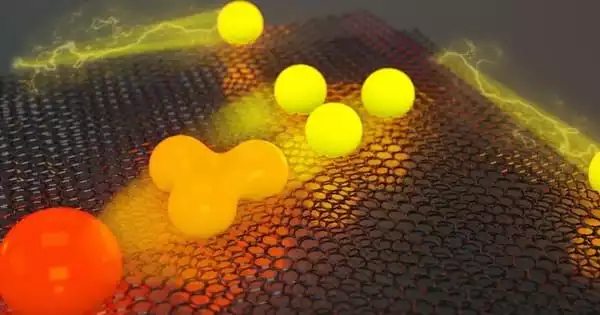A good battery must have both high energy density to power devices and stability to allow for countless safe and reliable recharges. Lithium-ion batteries have ruled supreme for the past three decades, demonstrating their performance in smartphones, computers, and electric cars.
But battery researchers have begun to approach the limits of lithium-ion. The hunt for safer, less expensive, and more potent battery technologies that can surpass lithium-ion is intensifying as next-generation long-range automobiles and electric airplanes begin to enter the market.
A team of researchers from the Georgia Institute of Technology, led by Matthew McDowell, associate professor in the George W. Woodruff School of Mechanical Engineering and the School of Materials Science and Engineering, is using aluminum foil to create batteries with higher energy density and greater stability.
The innovative battery technology developed by the researchers and described in Nature Communications may make it possible for electric vehicles to travel farther on a single charge, cost less to produce, and benefit the environment.
“We are always looking for batteries with higher energy density, which would enable electric vehicles to drive for longer distances on a charge,” McDowell said. “It’s interesting that we can use aluminum as a battery material, because it’s cost-effective, highly recyclable, and easy to work with.”
The idea of making batteries with aluminum isn’t new. Researchers investigated its potential in the 1970s, but it didn’t work well.
Aluminum expands and contracts when lithium moves in and out of the material when it is used in a traditional lithium-ion battery, which causes aluminum to fracture and fail after a few charge-discharge cycles. Aluminum wasn’t a practical battery material, according to developers, and the concept was mostly dropped.
One of the benefits of our aluminum anode that we’re excited about is that it enables performance improvements, but it also can be very cost-effective. On top of that, when using a foil directly as a battery component, we actually remove a lot of the manufacturing steps that would normally be required to produce a battery material.
Professor Matthew McDowell
Now, solid-state batteries have entered the picture. Solid-state batteries have a solid material that is not flammable and is therefore probably safer than lithium-ion batteries, which contain a flammable liquid that can cause fires. This study demonstrates how new high-performance active materials can be integrated into solid-state batteries.
The project began as a collaboration between the Georgia Tech team and Novelis, a leading manufacturer of aluminum and the world’s largest aluminum recycler, as part of the Novelis Innovation Hub at Georgia Tech.
When utilized as a material in the battery’s anode the negatively charged side of the battery that stores lithium to provide energy aluminum would have advantages in terms of energy, cost, and manufacture, however pure aluminum foils were breaking quickly when tested in batteries.
The team decided to take a different approach. In order to produce foils with certain “microstructures,” or arrangements of several materials, they added minute amounts of other materials to the aluminum instead of using pure aluminum. They tested over 100 different materials to understand how they would behave in batteries.
“We needed to incorporate a material that would address aluminum’s fundamental issues as a battery anode,” said Yuhgene Liu, a Ph.D. student in McDowell’s lab and first author on the paper. “Our new aluminum foil anode demonstrated markedly improved performance and stability when implemented in solid-state batteries, as opposed to conventional lithium-ion batteries.”
The research team found that the aluminum anode could store more energy and lithium than other types of anode materials. In the end, they had produced batteries with a high energy density that might outperform lithium-ion batteries.
“One of the benefits of our aluminum anode that we’re excited about is that it enables performance improvements, but it also can be very cost-effective,” McDowell said. “On top of that, when using a foil directly as a battery component, we actually remove a lot of the manufacturing steps that would normally be required to produce a battery material.”
Short-range electric aircraft are in development by several companies, but the limiting factor is batteries. Today’s batteries do not hold enough energy to power aircraft to fly distances greater than 150 miles or so. New battery chemistries are needed, and the McDowell team’s aluminum anode batteries could open the door to more powerful battery technologies.
“The initial success of these aluminum foil anodes presents a new direction for discovering other potential battery materials,” Liu said. “This hopefully opens pathways for reimagining a more energy-optimized and cost-effective battery cell architecture.”
To further understand how size affects the behavior of the aluminum, the team is currently scaling up the size of the batteries. In an effort to develop extremely affordable foils for battery systems, the group is also actively investigating various materials and microstructures.
“This is a story about a material that was known about for a long time, but was largely abandoned early on in battery development,” McDowell said. “But with new knowledge, combined with a new technology the solid-state battery we’ve figured out how we can rejuvenate the idea and achieve really promising performance.”
















